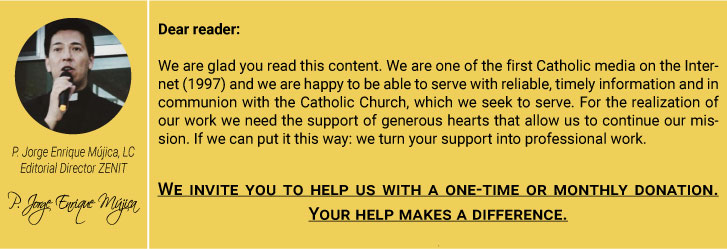During Pope Francis’ trip to the Holy Land, there was a Franciscan who translated for him from Hebrew and Arabic. The priest was Father Silvio de la Fuente, born in Buenos Aires, and a Franciscan friar of the Custody of the Holy Land. ZENIT interviewed him by telephone and he gave us some interesting particulars, which we share below with our readers.
***
ZENIT: What incidents with Pope Francis can you tell us about that were outside the program?
–Friar Silvio: There were several small but very lovely signs on the part of the Holy Father, such as the fact that he came to dine in our monastery. It was something exceptional, especially because he came to share “what happens in the monastery.” It wasn’t a luxurious lunch, that is, he ate what is usually served.
ZENIT: But this visit wasn’t planned as there was another official lunch scheduled, no?
–Friar Silvio: That day he had to go to the Notre Dame Center. It is a hotel which is in front of the friars’ monastery, a very nice hotel of the Legionaries of Christ [property of the Holy See ndr] where many personalities go, which also has a high level of cuisine. Speaking with the Apostolic Nuncio, who told the Holy Father all that we do, he wanted to be with us, and so we had the privilege of his presence. A few members of the delegation came to the monastery, among them was the Latin Patriarch, Fouad Twal, and the Secretary of State, Pietro Parolin. In other words, part of the papal entourage lunched at the Notre Dame Center, but the Pope did receive the persons and communities he was going to meet in that hotel. He didn’t let anyone down.
ZENIT: You fill an important role in Jerusalem as the Custody of the Holy Land …
–Friar Silvio: Well, we have been in the Middle East since 1217. We take care of the majority of the shrines in the area, by will of the Holy See.
ZENIT: What impression was made when Francis embraced Rabbi Skorka and Sheik Abboud in front of the Western Wall?
–Friar Silvio: It was impressive to see the three sons of Abraham, because in the three monotheist religions we recognize in him a common Father. It was very symbolic: our elder brothers were at the Wailing Wall; our younger brothers were above in the esplanade of the mosque, and Pope Francis was embracing them both.
ZENIT: How is the inter-religious dialogue lived in Jerusalem?
–Friar Silvio: There are two levels of ecumenism or inter-religious dialogue, the theological or if we wish the more scientific, and the other which is that of daily coexistence as, for instance, when one needs bread one goes to a shopkeeper who is Muslim, or if one needs oil, one goes to one who is a Jew. After all, that is also inter-religious coexistence, and one doesn’t begin to discuss theology. Daily transactions already open to dialogue, and the simple but very significant gestures that Francis made, affirm and reinforce something that the friars and so many people in the Holy Land have been doing for a long time.
ZENIT: One has the impression that there are many fundamentalists, or are they minorities?
–Friar Silvio: I’ll give you an example. When I was studying Hebrew at the Ulpan Milah, there were Muslims who were also studying there. One of the dynamics was to take photos of our families to introduce them and so practice the language. And it was lovely to see how each one presented his family or his children, and how a bearded Muslim who could not be more orthodox showed photos of his children and others who were Jews, also orthodox, shared their photos, and then we’d have a coffee together and ask questions about the family members, etc. in an atmosphere of great serenity and friendship.
ZENIT: Can you tell us something else that impressed you about the Pope?
–Friar Silvio: The truth is that I was very impressed by the Holy Father’s openness and courtesy to all. After all the visits we had, we got on the plane [back to Rome] and members of the crew came and the Pope had a photo taken with each one of them, then he began to pray. After that he went to the press conference and members of the crew asked him for his autograph and if he could speak with them. He accepted calmly after three days of such a full visit — and always giving signs of warmth to others. He himself said that sometimes simple gestures are enough, such as a smile, so that a relation can arise or improve between two persons.
ZENIT: Did the Pope find time to pray in the midst of such a full program?
–Friar Silvio: In fact, when we were in the car or the helicopter, and also on the plane, he would pray, either with the Breviary in his hand or the Holy Rosary. Sometimes he would ask me something, or I asked him or shared something with him, on other occasions he simply prayed.




